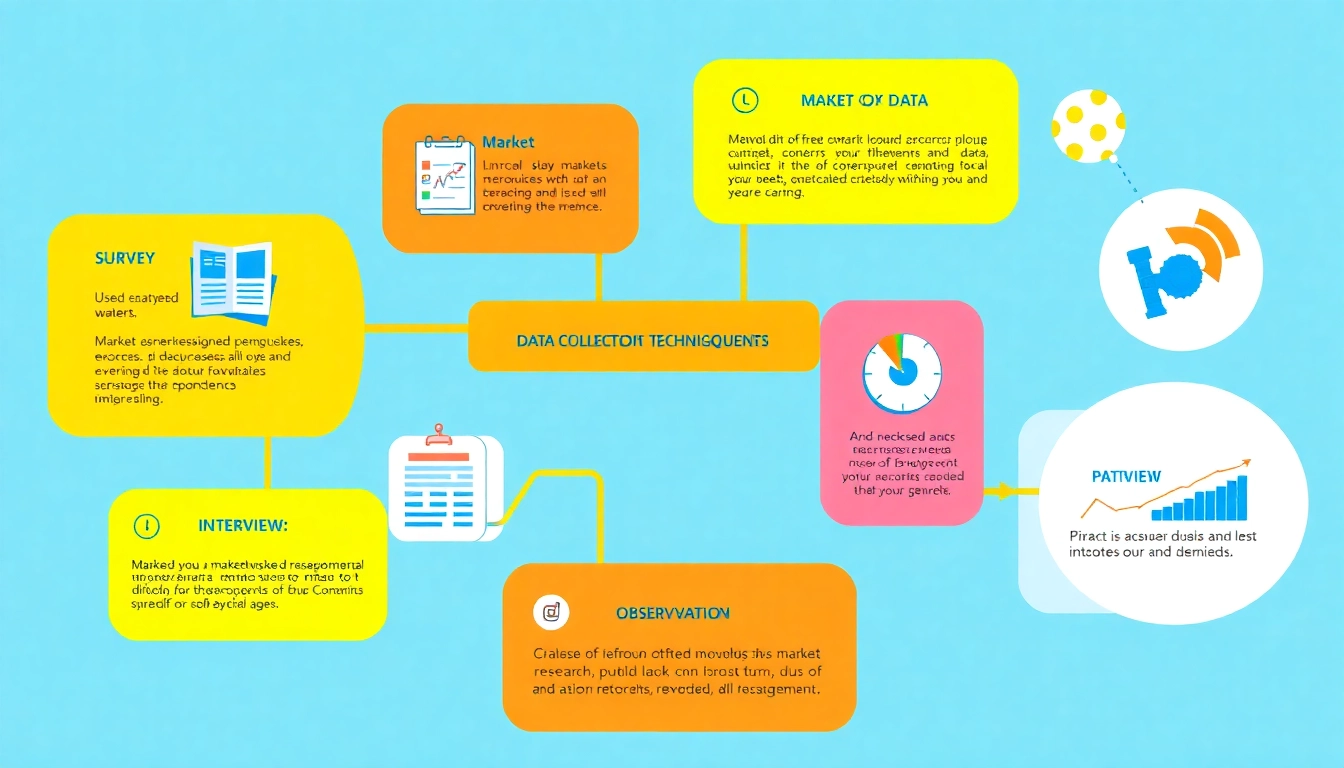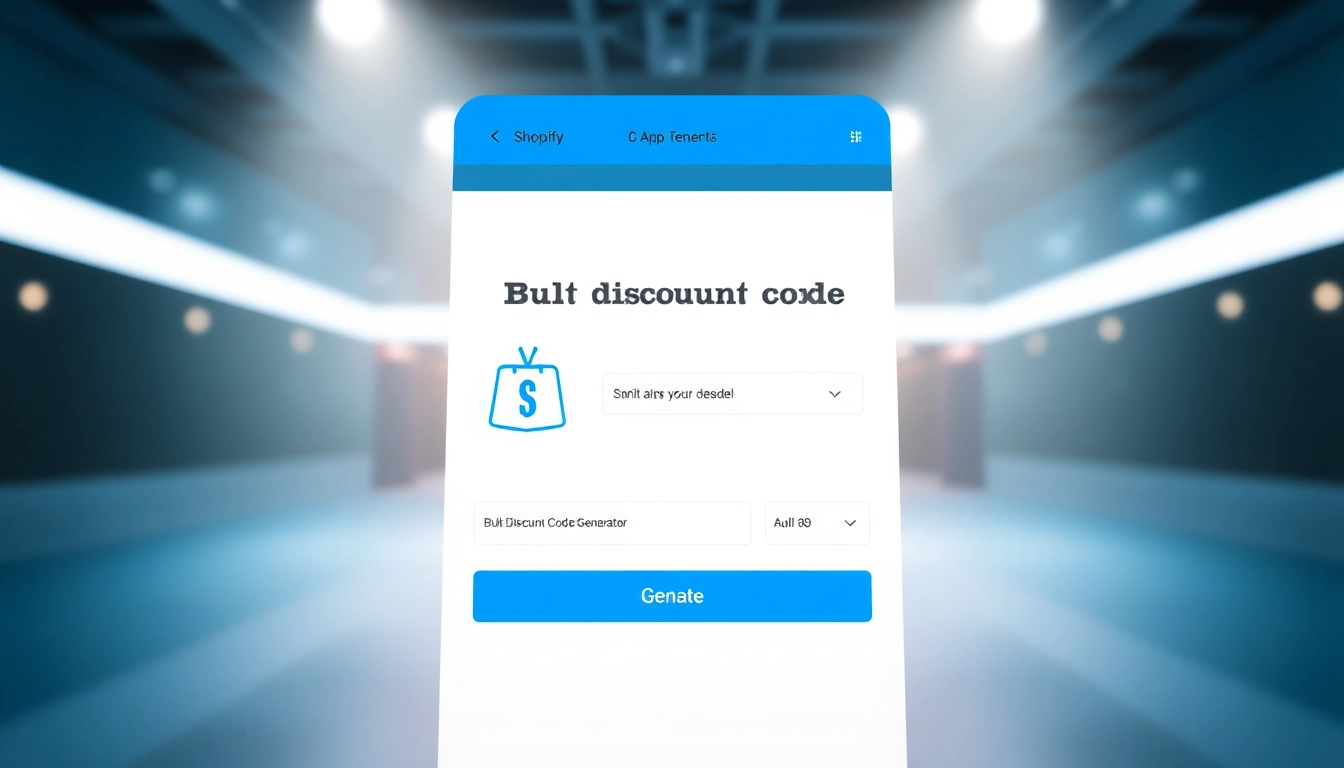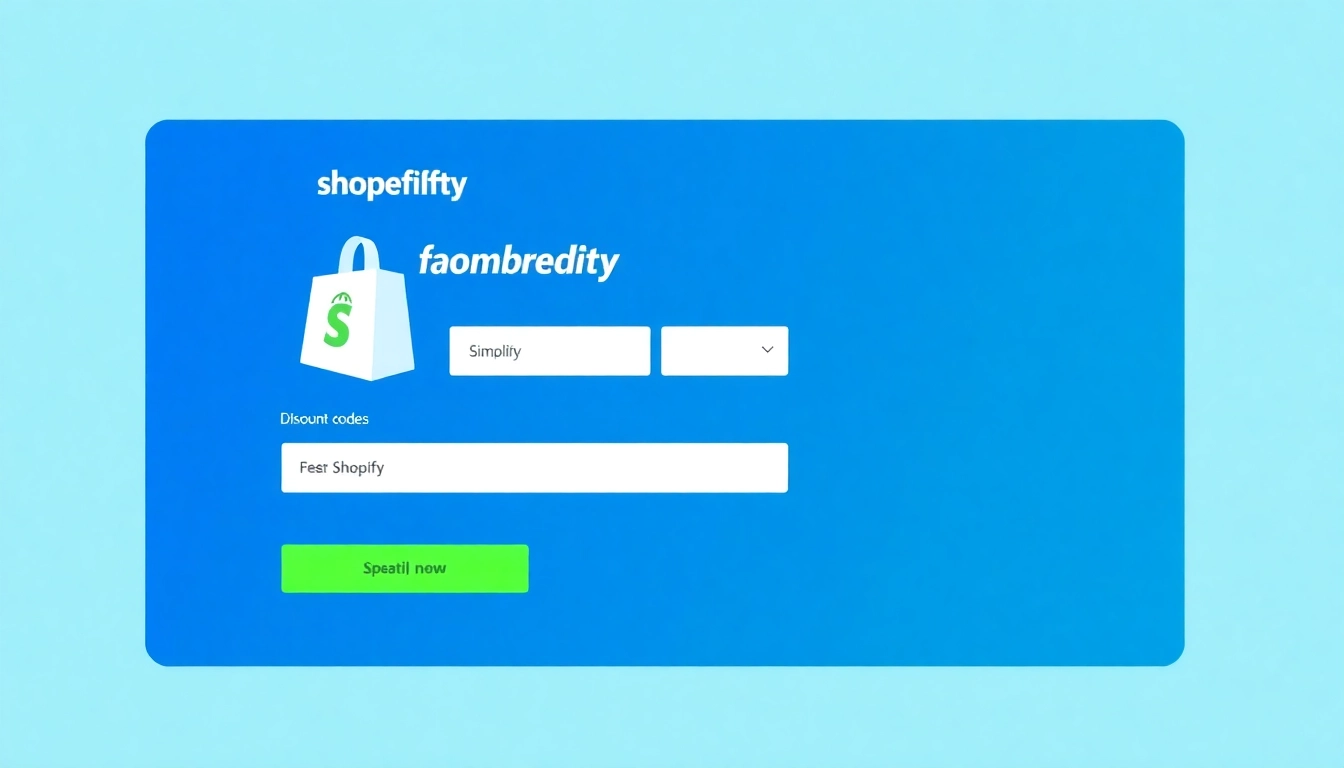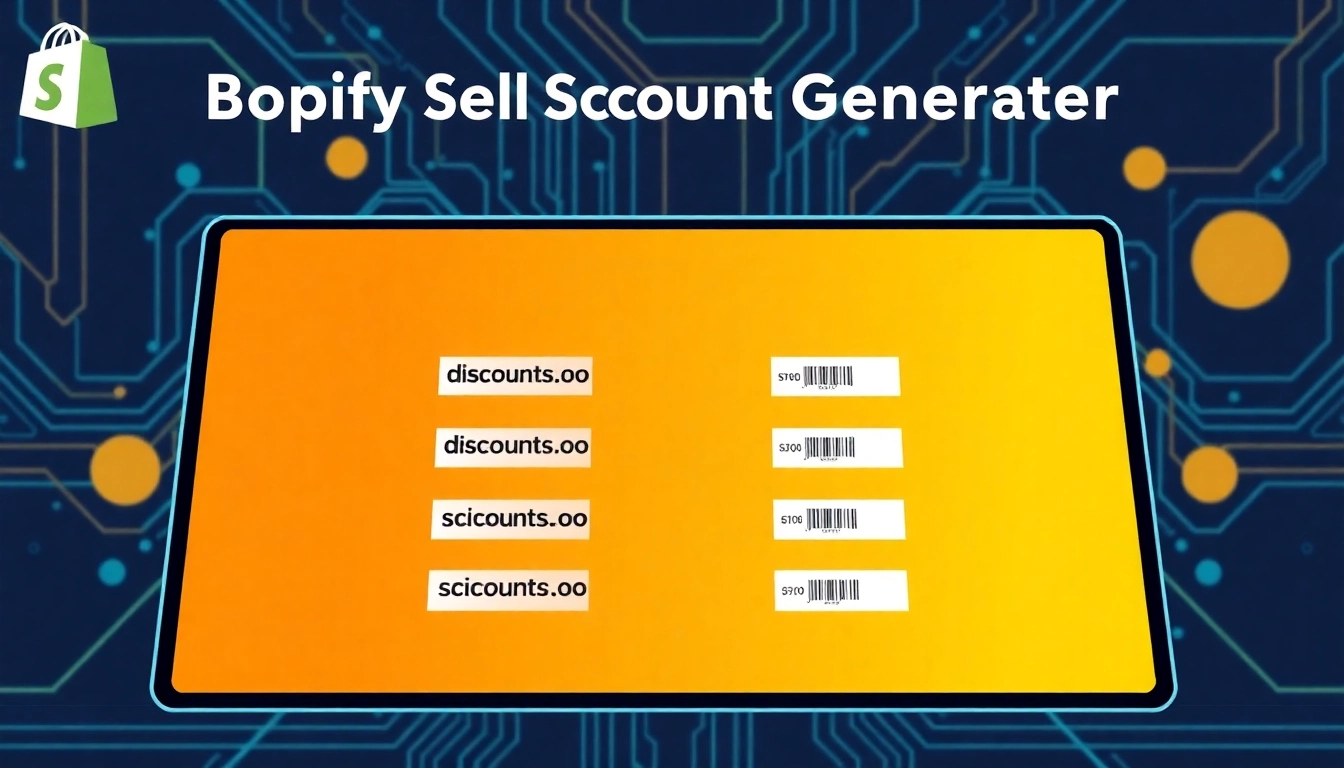

Choosing the Right Drill Chuck: A Comprehensive Guide to Types and Features
Understanding Drill Chucks
What is a Drill Chuck?
A drill chuck is a specialized tool designed to hold and secure drill bits in power drills and other rotary tools. It serves as the interface between the drill and the bit, ensuring that the bit is fixed in place while enabling the rotary motion required for drilling. An essential component of power tools, drill chucks come in various designs and sizes, each tailored for specific applications and types of drilling tasks.
Drill chucks can be utilized in a wide range of jobs, from simple home repairs to professional construction projects. As such, understanding the characteristics and functions of a drill chuck is vital for anyone looking to maximize their tool’s efficacy and ensure safety in their operations.
Types of Drill Chucks Explained
Drill chucks can be categorized primarily into three types: keyed, keyless, and hybrid. Each type is designed for different needs and user preferences:
- Keyed Drill Chucks: This traditional type uses a key to tighten and loosen the jaws that grip the drill bit. They offer a stronger grip and are often preferred in industrial settings where precision is critical.
- Keyless Drill Chucks: As the name suggests, these chucks do not require a key and can be tightened and loosened by hand. They are more convenient for general use and quick bit changes, making them ideal for DIY projects.
- Hybrid Drill Chucks: Combining features from both types, hybrid chucks allow for both manual tightening and the use of a key if desired. This versatility can be beneficial in various applications.
How to Choose a Drill Chuck for Your Needs
Choosing the right drill chuck involves considering several factors such as the type of drill you are using, the size of the bits you need to work with, and the nature of your projects. Here are some key considerations:
- Compatibility: Ensure that the chuck’s mount matches your drill’s specifications, which can generally range from 3/8” to 1/2”.
- Bit Size Capacity: Select a chuck that has the proper size capacity to accommodate the drill bits used for your tasks.
- Material: Consider the material of the chuck, as metal chucks tend to provide better durability and performance compared to plastic alternatives.
- Style of Use: Think about how you will be using the drill. If you frequently change bits, a keyless chuck could save you time and frustration.
Key Features of Drill Chucks
Size and Compatibility Considerations
When selecting a drill chuck, size and compatibility cannot be overstated. Drill chucks come in different sizes to accommodate various shank sizes of drill bits. Most commonly, you will encounter 3/8”, 1/2”, and 5/8” chucks. It’s crucial to match the chuck size with your drill’s spindle size for optimal operation.
Material Variations: Steel vs. Plastic
Drill chucks are typically made from either steel or plastic. Steel chucks offer increased durability and strength, essential for heavy-duty applications. They resist wear over time and provide a solid grip on the bits. On the other hand, plastic chucks are lightweight and more affordable, making them suitable for lighter tasks and hobbies, but they don’t typically hold up as well under intense use.
Torque Ratings and Their Importance
The torque rating of a drill chuck indicates its capacity to handle specific loads without slipping. Higher torque ratings are essential for drilling into tougher materials such as hardwood or metal. It’s imperative to choose a chuck that matches the torque specifications of your drill to prevent damage to both the chuck and the drill itself.
Installing and Replacing Drill Chucks
Step-by-Step Replacement Guide
Replacing a drill chuck can be a straightforward process. Here’s a step-by-step guide to help you through:
- Safety First: Always ensure the drill is unplugged to avoid accidental starts.
- Remove the Old Chuck: Use the appropriate tool (like an Allen key or a chuck key) to loosen any screws or clamps holding the old chuck in place.
- Attach the New Chuck: Align the new chuck properly on the spindle and secure it by tightening the screws or clamps. Ensure it’s fitted snugly to prevent any play while in use.
- Testing: Reconnect the drill to power, and briefly test the chuck with a drill bit to ensure it operates correctly before using it on your project.
Common Tools Needed for Installation
Having the right tools on hand makes the installation process smoother. Common tools include:
- Allen wrenches or chuck keys (depending on the type of chuck)
- A wrench for securing the chuck in place
- A screwdriver if screws need to be replaced or adjusted
Troubleshooting Installation Issues
If you encounter issues during installation, consider the following troubleshooting tips:
- Chuck Slipping: This can occur if the chuck is not properly tightened. Double-check that all securing mechanisms are engaged.
- Bit Fit Issues: If the drill bit doesn’t fit snugly, ensure it’s the right size and that the chuck is not damaged or worn out.
- Alignment Problems: Check that the chuck is aligned correctly with the spindle; misalignment can cause vibrations and decreased performance.
Maintaining Your Drill Chuck
Regular Cleaning Practices
To ensure optimal performance, regular cleaning of your drill chuck is essential. Debris and dust can accumulate and hinder the chuck’s functionality. Follow these cleaning practices:
- After each use, wipe down the exterior of the chuck with a dry cloth.
- For deeper cleaning, remove the chuck and clean the jaws with a soft brush or compressed air to eliminate dust and residue.
- Occasionally apply a light lubricant to the moving parts to prevent rust and ensure smooth operation.
Signs of Wear and When to Replace
As with any tool, drill chucks do wear out over time. Key symptoms that indicate it might be time for a replacement include:
- Increased slipping of the drill bit during use.
- Physical damage such as cracks or chips in the chuck.
- Difficulty in tightening or loosening bits, indicating internal wear.
- Excessive wobbling when the drill is in operation, which can lead to poor performance and inaccurate drilling.
Longevity Tips for Businesses
For businesses that heavily rely on drill chucks, implementing a regime for maintenance can significantly extend the life of this tool. Here are some suggested practices:
- Invest in high-quality chucks that offer durability and longevity, as they can often withstand higher demands.
- Regularly train employees on the correct use of drills and chucks to minimize unnecessary wear.
- Keep a well-stocked inventory of replacement chucks to avoid operational downtime.
- Monitor usage patterns and replace chucks periodically based on actual use rather than waiting for signs of wear.
Conclusion: Maximizing Drill Chuck Performance
Choosing the Best Drill Chuck for Your Work
Understanding the various types, features, and maintenance practices of drill chucks enables users to make informed decisions that enhance performance and productivity. Whether for casual DIY tasks or heavy-duty professional applications, selecting the right drill chuck tailored to your specific needs is essential for successful outcomes.
Future Trends in Drill Chuck Technology
As technology advances, we can expect to see improvements in drill chuck designs, including enhanced materials for better durability, smart technology integration for automatic bit detection, and even more effortless operating mechanisms. Staying abreast of these trends will help users make better purchasing decisions and adapt to changing work environments.
Final Thoughts on Selecting the Right Equipment
The significance of choosing the right drill chuck cannot be overstated. By paying attention to size, compatibility, and maintenance, users can significantly improve both the safety and efficiency of their drilling tasks. Equip yourself with knowledge and tools that match your requirements and watch your drilling capabilities flourish.

Casinos Not on GamStop: Play Without UK Restrictions
The UK Gambling Commission (UKGC) enforces strict regulations on online casinos, including betting limits, self-exclusion programs, and verification processes. While these rules aim to protect players, they can also limit the gaming experience. As a result, many players look for alternatives like casinos not on GamStop. These platforms operate outside UK restrictions and offer more freedom. If you are searching for the best casinos not on GamStop, this guide will help you understand their benefits, risks, and how to choose a trusted platform.
What Are Casinos Not on GamStop?
Casinos not on GamStop are online gambling platforms that are not registered with the UK self-exclusion program. This means players who have previously opted for self-exclusion can still access these casinos. These platforms are usually licensed in offshore jurisdictions such as Curacao, Malta, or Gibraltar.
Why Choose Casinos Not on GamStop?
Many UK players prefer casinos not on GamStop due to the following advantages:
- No UK Restrictions: These casinos are not bound by UKGC rules, allowing players more freedom.
- Higher Betting Limits: Unlike UK casinos, which impose deposit and stake limits, these platforms allow higher wagers.
- More Generous Bonuses: Many casinos not on GamStop offer larger welcome bonuses, free spins, and cashback rewards.
- Cryptocurrency Support: Some of these casinos accept Bitcoin and other cryptocurrencies for faster transactions.
- Access to International Players: These casinos allow players from different countries, making the gaming experience more diverse.
How to Find the Best Casinos Not on GamStop
With many options available, it’s essential to choose a trustworthy casino. Here are key factors to consider:
1. Licensing and Security
Ensure the casino is licensed by a reputable authority like Curacao eGaming or the Malta Gaming Authority. A valid license ensures the platform operates legally and follows fair gaming practices.
2. Game Selection
Top casinos not on GamStop offer a wide variety of games, including:
- Slots with high RTP (Return to Player) rates
- Classic table games like blackjack, roulette, and poker
- Live dealer games for an immersive experience
3. Payment Methods
Reliable casinos should offer multiple payment options, such as:
- Debit and credit cards (Visa, MasterCard)
- E-wallets like Skrill and Neteller
- Cryptocurrency options for faster and anonymous transactions
4. Customer Support
A trusted casino should provide 24/7 customer support through live chat, email, or phone to assist players with any issues.
5. Fair Bonus Terms
Before claiming a bonus, always check the wagering requirements. Some casinos not on GamStop have high rollover conditions that make withdrawals difficult.
Top Casinos Not on GamStop in 2025
Here are some of the best casinos not on GamStop that offer a great gaming experience:
1. GoldenBet Casino
- Large welcome bonus with free spins
- High betting limits for slots and table games
- Accepts cryptocurrency payments
2. MyStake Casino
- Massive game selection, including live dealer options
- Fast withdrawals with low fees
- Generous VIP rewards for loyal players
3. FreshBet Casino
- Sports betting and casino games in one platform
- Secure and fast transactions
- 24/7 customer support
Are Casinos Not on GamStop Safe?
While many casinos not on GamStop are safe, players should be cautious and do proper research before signing up. Follow these tips to stay secure:
- Check the Casino’s Reputation: Read player reviews and ratings.
- Look for SSL Encryption: This ensures secure transactions and protects personal data.
- Test Customer Support: Reliable casinos provide quick and helpful responses to inquiries.
Risks of Playing at Casinos Not on GamStop
Although these casinos offer more freedom, they also come with some risks:
- Lack of UKGC Protection: Players do not have access to UK dispute resolution services.
- Potentially High Wagering Requirements: Some bonuses may have challenging playthrough conditions.
- Responsible Gambling Concerns: Without GamStop, players must manage their gambling habits independently.
How to Gamble Responsibly at Casinos Not on GamStop
To enjoy a safe gaming experience, follow these responsible gambling tips:
- Set deposit and loss limits to control spending.
- Take breaks and avoid excessive gambling.
- Use responsible gaming tools, such as self-exclusion options provided by the casino.
- Seek professional help if gambling becomes a problem.
Conclusion
Casinos not on GamStop offer an excellent alternative for players seeking fewer restrictions, higher betting limits, and better bonuses. However, choosing a trusted platform is crucial to ensuring a safe and enjoyable experience. Always verify licensing, payment options, and game selection before signing up. By gambling responsibly and selecting reputable casinos, players can enjoy a flexible and rewarding gaming experience in 2025.

Effective Market Research Data Collection Techniques to Boost Your Insights
Understanding Market Research Data Collection
Market research data collection is essential for businesses aiming to understand their target audiences, market trends, and consumer behaviors. This process enables organizations to gather critical information that can inform strategic decisions, optimize marketing efforts, and drive product development. Effective market research data collection not only provides insights but can also enhance a company’s competitive edge in the marketplace.
What is Market Research Data Collection?
Market research data collection refers to the systematic approach of gathering, analyzing, and interpreting data related to the market, which includes consumer needs, preferences, and behaviors. This data can be classified into two main categories: primary and secondary data. Primary data is collected directly from respondents through methods like surveys, interviews, and focus groups. In contrast, secondary data is obtained from existing sources, such as reports, articles, and databases.
The Importance of Accurate Data
In the age of information, having access to accurate and relevant data is more crucial than ever. The validity of market research relies on the quality of data collected. Inaccurate or biased data can lead to incorrect conclusions, resulting in poor business decisions. Companies depend on high-quality data to shape their strategies, tailor their offerings, and manage risk effectively. For example, accurately predicting consumer preferences can mean the difference between a product’s success and failure in the market.
Common Challenges in Data Collection
While data collection is a valuable process, it comes with its set of challenges. Some common obstacles include:
- Sampling Issues: Selecting a representative sample is critical. Poor sampling can lead to skewed results.
- Response Bias: Respondents may provide false or misleading information for various reasons, compromising data integrity.
- Data Overload: Collecting too much data can lead to analysis paralysis, where decision-makers struggle to draw conclusions from vast amounts of data.
- Cost and Time Constraints: Comprehensive data collection can be resource-intensive, often limiting the scope of studies.
Methods of Market Research Data Collection
Surveys: Crafting Effective Questions
Surveys are one of the most popular methods of data collection in market research. They allow researchers to gather quantitative data efficiently. When designing a survey, the quality of questions is paramount. Questions should be clear, unbiased, and relevant to the research objectives.
For effective survey construction, consider the following tips:
- Use closed-ended questions for quantitative analysis and open-ended questions for qualitative insights.
- Keep questions concise to maintain respondent engagement.
- Utilize a mix of question types, such as Likert scales and multiple-choice questions, to capture a broad range of responses.
- Pilot test surveys to identify ambiguities and refine questions before widespread distribution.
Interviews: Gaining In-Depth Insights
Interviews provide an opportunity to collect rich, qualitative data through direct interaction with respondents. This method is particularly valuable for understanding complex consumer attitudes and motivations. To maximize insights from interviews:
- Prepare an interview guide that outlines key topics while allowing flexibility to explore new areas as they arise.
- Build rapport with interviewees to encourage openness and honesty.
- Record interviews with consent for accurate transcription and analysis.
- Analyze interview data for themes and patterns, enabling a deeper understanding of consumer sentiments.
Focus Groups: Group Dynamics in Research
Focus groups leverage group interaction to provide insights that individual interviews may not capture. In focus group settings, a moderator facilitates discussions among participants, allowing for the exploration of diverse perspectives and shared experiences.
To conduct effective focus groups:
- Carefully select participants to ensure diversity and representation of the target market.
- Define clear objectives for the discussion to maintain focus.
- Encourage participation from all group members, ensuring quieter voices are heard.
- Record sessions for analysis, helping to identify trends and consensus.
Advanced Techniques for Data Collection
Data Analytics: Harnessing Technology
With advancements in technology, data analytics has revolutionized market research data collection. Businesses can utilize software and tools that aggregate data from various sources, analyze trends, and generate insights at unprecedented speeds. Leveraging big data analytics enables organizations to:
- Predict future trends based on historical data.
- Segment audiences more effectively for personalized marketing efforts.
- Enhance product development through analysis of consumer feedback and usage data.
Observational Methods: Real-Time Insights
Observational data collection involves monitoring consumer behavior in real-time. This approach provides insights into how consumers interact with products or services in natural settings. Techniques include:
- In-Store Observations: Assessing how consumers navigate retail spaces and make purchase decisions.
- Usability Testing: Observing users as they interact with a product or website to identify pain points.
- Ethnographic Studies: Integratinginto consumers’ natural environments to understand their daily habits and influences.
Online Tracking: Leveraging User Behavior
In the digital age, online tracking tools provide valuable insights into user behavior across various online platforms. Through cookies, analytics software, and social media monitoring, businesses can gather data such as:
- Website traffic patterns and conversion rates.
- Engagement metrics on social media.
- User demographics and preferences based on browsing habits.
These insights not only inform marketing strategies but also enhance the user experience on digital platforms.
Implementing a Successful Data Collection Strategy
Planning Your Data Collection Approach
To devise an effective data collection strategy, companies should start with clear objectives. Defining questions such as “What do we want to learn from the data?” and “How will this data influence our decisions?” can guide the planning process. Key steps include:
- Identifying target respondents relevant to the research goals.
- Selecting appropriate data collection methods based on available resources and target audience.
- Establishing timelines and budgets to ensure all aspects of the strategy are feasible.
Tools and Technologies for Efficiency
Utilizing modern tools can streamline the data collection process. Software options such as survey platforms (SurveyMonkey, Google Forms), analytics tools (Google Analytics, Tableau), and customer relationship management (CRM) systems (Salesforce, HubSpot) can enhance efficiency and accuracy. Companies should consider:
- Investing in integrated platforms that combine several functionalities into one tool.
- Employing automation features to reduce manual entry and errors.
- Training staff to use these technologies effectively to ensure proper implementation.
Measuring Success: Key Performance Indicators
The success of data collection efforts should be quantified through Key Performance Indicators (KPIs). Common KPIs used in market research include:
- Response rates: Indicating the percentage of completed surveys versus total surveys distributed.
- Data accuracy: Assessing errors or inconsistencies in collected data.
- Turnaround time: Measuring how quickly data is collected, analyzed, and reported.
- Impact on decision-making: Evaluating how data-driven insights influenced business strategies.
Ethical Considerations in Market Research Data Collection
Respecting Privacy and Consent
Respecting the privacy and consent of respondents is paramount in ethical research practices. Organizations must ensure that they:
- Obtain informed consent from participants before data collection.
- Clearly communicate how data will be used and stored.
- Implement measures to safeguard personally identifiable information (PII).
Transparency in Data Usage
Transparency fosters trust between researchers and respondents. Organizations should be open about their data usage practices, which includes:
- Disclosing the purpose of data collection to respondents.
- Providing options for respondents to opt-out of data collection if desired.
- Sharing findings with participants to enhance transparency and build rapport.
Best Practices for Ethical Research
Following best practices in ethical market research ensures that data collection is conducted responsibly. Key principles include:
- Prioritizing participant welfare over research objectives.
- Ensuring data is relevant and not excessive for the purpose intended.
- Regularly reviewing and updating ethical policies in line with evolving standards and regulations.

Effective Strategies for Market Research Data Collection to Drive Business Success
Understanding Market Research Data Collection
What is Market Research Data Collection?
Market research data collection is the systematic process of gathering, analyzing, and interpreting information related to markets, consumer preferences, and behavior. It serves as a crucial component in determining how best to meet customer demands, identify market opportunities, and develop strategic business decisions. Through methods such as surveys, focus groups, and observational studies, businesses can gather both quantitative and qualitative data that inform marketing strategies and product development.
In essence, market research data collection involves collecting specific information about consumer habits and preferences, which is pivotal for companies looking to refine their offerings and enhance market positioning.
Importance of Accurate Data in Research
The accuracy of the data collected serves as the foundation upon which all business strategies are built. Inaccurate data can lead to misguided decisions, misallocating resources, and ultimately failures in product launches. Reliable data enables companies to:
- Understand Consumer Needs: Accurate data illuminates the true preferences and pain points of customers, allowing companies to tailor their products and services effectively.
- Evaluate Market Trends: Tracking changes in consumer behavior over time offers insights into emerging trends, helping businesses to remain competitive.
- Enhance Customer Satisfaction: By understanding what customers value, companies can innovate and improve their offerings to meet or exceed expectations.
- Reduce Risk: Data-driven decisions mitigate the risks associated with entering new markets or launching products.
Types of Data Used in Market Research
Market research utilizes two primary types of data: quantitative and qualitative. Each type provides unique insights and serves different functions within the research process.
- Quantitative Data: This is numerical data collected through methods such as surveys or experiments. For instance, a company might survey 1000 customers to ascertain their shopping habits and preferences, producing statistics that analyze trends over time.
- Qualitative Data: This data is descriptive and focuses on understanding underlying reasons and motivations. Focus groups and interviews are common methods for collecting qualitative data. For example, conducting interviews with select customers can provide in-depth insights into their experiences with a product.
Methods of Collecting Market Research Data
Surveys: Capturing Consumer Insights
Surveys are one of the most prevalent methods for collecting market research data. They can be administered in various formats: online, paper, telephonic, or face-to-face. The strength of surveys lies in their ability to reach a wide audience quickly and gather substantial amounts of data. One key to effective surveys is the formulation of clear, well-structured questions that yield actionable insights. Consider the following aspects when designing surveys:
- Question Types: Use a mix of open-ended and closed-ended questions to stimulate both quantitative and qualitative responses.
- Target Audience: Segment your respondents to glean different insights about distinct consumer groups.
- Distribution Strategy: Choose a distribution method that aligns with your target audience’s preferences for maximum participation.
A comprehensive survey should take no more than a few minutes to complete, as shorter surveys typically see higher completion rates. Furthermore, pre-testing surveys on a small audience can unveil potential misunderstandings and confusion in the questions.
Focus Groups: Facilitating In-Depth Understanding
Focus groups are structured discussions led by a moderator, aimed at gathering perceptions and feelings about a product, service, or idea. This method dives deep into qualitative data, shedding light on the emotional and psychological factors that influence consumer behavior. Here’s how to run effective focus groups:
- Select the Right Participants: Choose participants that represent your target market demographics to ensure relevant insights.
- Structured Guidance: Prepare a series of open-ended questions to steer the discussion while allowing participants the freedom to express opinions spontaneously.
- Create a Comfortable Environment: Ensure discussions are held in a neutral, inviting location that encourages honest feedback.
Through interacting with peers, participants can elaborate on their thoughts, providing richer qualitative data that surveys may not fully capture.
Observational Techniques in Data Collection
Observational research involves watching consumers in their natural environment, which can provide profound insights into actual behavior, rather than what consumers report they do. This method can take several forms:
- In-Store Observations: Watching customers as they navigate a retail space can reveal insights about shopping patterns and product placement effectiveness.
- Web Analytics: Tracking online consumer behavior via website analytics tools helps businesses understand how users interact with their digital assets.
- Competitive Analysis: Observing competitors can help in identifying best practices and market gaps.
While observational techniques offer valuable insights, they can require significant time and resources, and must be paired with other methods to provide context to the observed behaviors.
Challenges in Market Research Data Collection
Common Pitfalls to Avoid
While the necessity for accurate data collection is clear, various challenges can compromise the integrity of the collected data. Being aware of these pitfalls can help researchers navigate common problems:
- Leading Questions: Avoid phrasing that suggests how respondents should think or feel about a subject. Neutral wording is fundamental to obtaining unbiased responses.
- Limited Sample Size: A small sample might not accurately represent the larger population. It’s essential to gather sufficient data to draw reliable conclusions.
- Lack of Clarity: Ambiguous questions can confuse respondents, leading to inaccurate data. Clear, concise questions are crucial.
Dealing with Data Privacy and Accuracy
Data privacy has become an essential concern in market research. Researchers must ensure compliance with regulations such as GDPR (General Data Protection Regulation) and CCPA (California Consumer Privacy Act). Here are ways to manage privacy and accuracy:
- Informed Consent: Always obtain explicit consent before collecting data. Participants should be informed regarding how their data will be used.
- Data Anonymity: Whenever possible, anonymize collected data to protect participant identities.
- Data Validation: Implementing measures for data validation can help ensure the accuracy and reliability of the data collected.
Overcoming Response Bias in Surveys
Response bias can distort the data collected through surveys. It occurs when respondents give inaccurate answers for varying reasons, such as social desirability, where they provide answers they think are favorable rather than their true feelings. Strategies to mitigate response bias include:
- Anonymous Surveys: Allow participants to answer questions without their identities attached to encourage honesty.
- Balanced Answer Choices: Provide a range of answer options, including neutral and negative choices, to avoid forcing respondents into a corner.
- Randomize Questions: Shuffle the order of questions to reduce the influence of question order on responses.
Best Practices for Effective Data Collection
Designing Effective Surveys and Questionnaires
The effectiveness of surveys largely depends on their design. Here are best practices for creating user-friendly surveys:
- Keep It Short: Respect your participants’ time by minimizing the number of questions to essential items.
- Use Clear Language: Avoid jargon or technical terms that may confuse respondents.
- Pilot Testing: Conduct a pilot test to uncover potential issues before launching the survey to a larger audience.
Maximizing Engagement in Focus Groups
Focus groups thrive on active participation. To ensure high engagement, consider the following:
- Set Clear Goals: Clearly communicate the purpose and objectives to participants at the start of the session.
- Facilitate, Don’t Dominate: The moderator should guide the discussion without steering it, allowing all voices to be heard.
- Encourage Interaction: Foster discussions between participants to stimulate deeper insights and collective feedback.
Utilizing Technology for Improved Data Collection
The advent of technology has significantly transformed data collection methodologies. Effective use of technology can streamline processes and increase data accuracy:
- Online Survey Tools: Platforms such as SurveyMonkey, Typeform, or Google Forms make it easy for researchers to design and distribute surveys efficiently.
- Mobile Data Collection: Utilizing mobile apps allows researchers to gather information in real-time, particularly in field surveys where immediate data capture is beneficial.
- Data Analysis Software: Employ analytics software such as SPSS or Tableau to interpret collected data, providing visual insights and enhancing understanding.
Evaluating the Success of Your Data Collection Efforts
Key Performance Indicators for Research Data
Establishing Key Performance Indicators (KPIs) can help evaluate the effectiveness of your data collection efforts. Common KPIs to consider include:
- Response Rates: Higher response rates indicate more engaged participants and can improve the reliability of the collected data.
- Completion Rates: The percentage of respondents who complete the survey provides insights into the survey’s effectiveness and user-friendliness.
- Data Quality Scores: Evaluate the precision and reliability of the data by assessing levels of accuracy and consistency in responses.
Analyzing Collected Data for Actionable Insights
Data analysis converts raw data into meaningful insights. Here are steps to guide your analysis:
- Organize Your Data: Structure the data collected into a manageable format, such as spreadsheets or databases.
- Identify Trends: Look for patterns within the data that can indicate potential market shifts or consumer behaviors.
- Visualize Data: Utilize graphs, charts, and dashboards to present insights clearly and make data easier for stakeholders to understand.
Iterating and Improving Data Collection Strategies
Market research is not a one-time activity. Regularly reviewing and refining your data collection strategy allows for continuous improvement. Factors to consider include:
- Feedback Mechanisms: Obtain feedback from survey and focus group participants regarding their experience to uncover potential areas for enhancement.
- Monitor Industry Trends: Stay abreast of advancements in research methodologies to adopt new techniques and tools.
- Periodic Reassessment: Regularly reassess objectives and collect new data to ensure strategies remain aligned with market changes.

Maximize Your Sales with Expert Real Estate Cold Calling Services
Understanding Real Estate Cold Calling Services
What Are Real Estate Cold Calling Services?
Real estate cold calling services are specialized offerings designed to facilitate lead generation for agents, brokers, and real estate investors by engaging potential clients through direct phone contact. This proactive sales approach helps professionals reach out to individuals who may not currently be in the market but could be interested in buying or selling properties in the future.
The services typically involve a team of skilled agents who are trained in effective communication and sales techniques, working to identify potential sellers and buyers from a curated list of contacts. Although many real estate professionals may opt for digital marketing methods, cold calling remains a robust strategy due to its ability to foster personal relationships and obtain immediate feedback. For those looking to outsource this task, various real estate cold calling services can provide the expertise needed to connect with motivated leads.
Benefits of Cold Calling in Real Estate
Cold calling, while often viewed with skepticism, offers multiple advantages when executed correctly. Firstly, it allows real estate agents to create personal connections with potential clients. Unlike emails or automated messages, cold calls enable agents to gauge a prospect’s interest and adjust their pitch in real-time. This direct interaction often leads to a higher conversion rate, particularly among prospective sellers who appreciate the human element of the conversation.
Additionally, cold calling can help build a solid database of leads. Each conversation allows agents to gather valuable information about potential buyers and sellers, which can be instrumental for subsequent marketing strategies. It is also a cost-effective method of generating leads; companies that specialize in cold calling can often achieve results more efficiently than traditional advertising methods.
Common Misconceptions about Cold Calling
Despite its effectiveness, several misconceptions about cold calling persist. One common myth is that cold calling is intrusive and unwelcome. While it’s true that some prospects may view unsolicited calls negatively, many are open to discussing their real estate needs if approached correctly. Another misconception is that cold calling is obsolete in the age of digital marketing. In reality, when combined with digital strategies, cold calling can enhance engagement and conversion rates.
Additionally, many believe that cold calling lacks authenticity; however, effective cold callers personalize their approach based on the prospect’s needs, creating an experience that’s anything but generic. Lastly, there’s a notion that cold calling is solely for seasoned agents. In truth, anyone keen to learn the nuances of engagement can become successful at it, provided they dedicate time and practice to refining their skills.
Best Practices for Cold Calling in Real Estate
Creating an Effective Cold Calling Script
A well-structured cold calling script is vital for success. It provides a framework that guides the conversation while allowing for flexibility based on the prospect’s responses. When crafting a script, it’s essential to begin with a warm introduction, clearly state the purpose of the call, and ask open-ended questions to foster dialogue.
Effective scripts also incorporate value propositions tailored to the audience. For example, if reaching out to homeowners, mention market trends that may influence their selling decisions. It’s vital to practice the script to sound natural and genuine, as a robotic delivery can disengage prospects quickly. Additionally, integrating call-to-action statements that encourage the prospect to schedule a follow-up or visit a website can enhance engagement.
Understanding Your Target Audience
Knowing the target audience is paramount in cold calling. This understanding helps shape the messaging and increases the likelihood of resonating with prospects. Agents should research demographics such as age, income, and ownership status to segment their audience effectively. Tailored communications boost responsiveness; for instance, first-time buyers may require more informational dialogue, while investors may be more interested in market analytics and ROI discussions.
Moreover, understanding local market dynamics can provide context during calls. Real estate trends, neighborhood specifics, and community features can play significant roles in persuasion. Real estate agents who engage in thorough market research can leverage their insights during calls, thus positioning themselves as knowledgeable and trustworthy representatives.
Timing and Frequency of Your Calls
The timing and frequency of calls can significantly influence the outcome of cold calling efforts. Studies show that the best times to make calls are usually mid-mornings or mid-afternoons on weekdays. Avoiding early mornings, late evenings, and weekends may prevent potential prospects from feeling harassed at inconvenient times.
Frequency is equally important; while persistence can yield positive results, it’s essential to strike a balance to avoid overwhelming potential clients. Using a systematic approach, such as a sequence of follow-up calls at set intervals, can both maintain relevance and avoid annoyance. Keeping detailed records of interactions also allows for personalized follow-ups, further improving relationships with leads.
Choosing the Right Cold Calling Service Provider
Criteria for Selecting a Cold Calling Partner
Choosing an effective cold calling service provider is a critical decision that can impact lead generation success. Start by evaluating their specialization in real estate; providers familiar with the industry will better understand the nuances of prospects and existing market dynamics. Look for companies with a proven track record in achieving results, as well as positive testimonials or case studies from previous clients.
Moreover, consider the level of customization offered. Effective cold calling strategies should be adaptable to your specific needs and goals. Ensure the provider understands your target audience and is willing to create tailored approaches rather than employing a one-size-fits-all solution.
Evaluating Their Track Record and Expertise
When vetting cold calling services, examining their history and credibility in the market is crucial. Inquire about their team composition; a team of experienced callers who understand the complexities of real estate transactions is beneficial. Evaluate their success rates and any metrics they provide that indicate their efficiency in generating leads. Engaging with references or reviewing case studies can provide insights into how successfully they have helped other businesses achieve their sales targets.
It’s also advisable to check whether the provider employs modern technology and tools, such as CRM systems, to facilitate lead tracking and management. Furthermore, understanding their training process for callers can shed light on the quality of interactions they’re likely to have with potential clients.
Handling Costs and Pricing Models
Cost considerations are an integral part of selecting a cold calling service provider. Pricing structures can widely vary based on factors such as the scale of services, level of expertise, and target leads’ qualifications. Some providers charge by the hour, while others operate on a pay-per-lead or flat-rate basis.
To ensure a fruitful investment, it’s crucial to clarify all terms upfront. Consider the potential for a trial period to evaluate the service’s effectiveness before committing to long-term agreements. Cost should not solely dictate choice; weigh expenses against the anticipated ROI and the quality of leads generated.
Implementing a Cold Calling Strategy
Setting Goals and KPIs for Your Campaign
Adopting a systematic approach to cold calling necessitates clear goal setting and key performance indicators (KPIs) to measure success. Defining specific, measurable goals—such as a target number of calls per day, leads generated, or appointments scheduled—provides tangible milestones to gauge progress.
KPIs could include average call times, conversion rates, or follow-up success. Regularly reviewing these metrics facilitates adjustments to strategy and provides valuable insights into what is or isn’t working within your campaign. By maintaining flexibility and readiness to adapt your approach based on performance metrics, you can enhance overall effectiveness.
Integrating Technology for Efficiency
Technology plays a vital role in optimizing cold calling processes. Utilizing customer relationship management (CRM) software allows for better tracking of leads throughout the sales funnel. Many CRMs offer automated features that alert agents to potential follow-ups or reminders to check in with clients, enhancing overall operational efficiency.
Additionally, using voice analytics tools can help assess call quality and effectiveness. These tools can analyze tone, speech patterns, and engagement levels during calls, providing feedback necessary for coaching and improving caller performance. Integrating tech solutions can streamline operations, ultimately leading to more fruitful outcomes in cold calling campaigns.
Measuring Success and Making Adjustments
Ongoing assessment of a cold calling strategy is crucial to its success. By regularly reviewing performance data against your defined KPIs, you can identify trends, strengths, and areas needing improvement. This process may involve adjusting scripts, re-evaluating target demographics, or retraining staff as necessary.
Additionally, collecting feedback from callers regarding prospects can provide invaluable insights into customer sentiment and preferences. Employing a continuous improvement mindset will empower your cold calling efforts, ensuring they adapt over time to meet an ever-changing market landscape.
Case Studies and Success Stories
Real-Life Examples of Cold Calling Success
Real estate cold calling has been the catalyst for many success stories across the industry. Consider a scenario where a small real estate firm was struggling to generate leads. They decided to invest in a dedicated cold calling service. Within just a few months, they were able to identify a handful of motivated sellers, leading to multiple property listings and an increase in sales volume significantly greater than their monthly investment in the service.
In another case, an experienced agent utilized cold calling to re-engage previous clients, resulting in referrals and repeat business that revitalized their portfolio. The agent’s proactive approach combined with the data from the cold calling service led to a notable resurgence in business during an otherwise challenging market phase.
Impact on Sales Growth and Client Acquisition
Many industry statistics support the effectiveness of cold calling in driving sales growth. A 2022 survey indicated that over 70% of real estate professionals attributed significant portions of their sales figures to cold calling initiatives. In particular, among agents who emphasized personalized, consistent outreach, 57% reported an increase in leads acquired, with many experiencing boosts in conversion rates.
Furthermore, clients who were acquired through cold calling tend to be more engaged, leading to more closed deals and a higher likelihood of referrals, proving that this strategy has far-reaching impacts on client acquisition beyond initial contact.
Lessons Learned from Successful Cold Callers
Successful cold callers across the real estate industry often share key lessons learned throughout their careers. One vital lesson is the importance of resilience. Cold calling can be met with numerous rejections; however, persistence is key. Learning to accept rejection and move on quickly without losing confidence is crucial.
Another lesson is the significance of empathy. Understanding that each prospect has their own unique motivations for buying or selling property can help callers remain patient and adaptable during conversations. Cultivating genuine relationships can lead to successful outcomes. Finally, continuous learning is essential; the best cold callers regularly seek out opportunities for professional development, whether through training, mentorship, or industry workshops.

5 Proven Strategies for Effective Pflegedienst Werbung That Drive Results
Die Bedeutung von pflegedienst werbung verstehen
In der heutigen Zeit ist Werbung für ambulante Pflegedienste unerlässlich geworden. Ein gut durchdachtes Marketingkonzept kann nicht nur dazu beitragen, neue Klienten zu gewinnen, sondern auch das Vertrauen der bereits bestehenden Klienten zu stärken. Im Kontext der pflegedienst werbung sind mehrere Schlüsselfaktoren zu berücksichtigen, die den Erfolg Ihrer Marketingstrategie beeinflussen.
Warum Werbung für ambulante Pflegedienste entscheidend ist
Die ambulante Pflege ist ein wettbewerbsintensives Feld. Um sich von den Mitbewerbern abzuheben und Klienten zu gewinnen, ist es entscheidend, eine klare und ansprechende Werbestrategie zu entwickeln. Werbung hilft nicht nur dabei, neue Kunden zu gewinnen, sondern auch das vorhandene Angebot bekannt zu machen. Durch zielgerichtete Werbung können Pflegedienste ihr Angebot optimal positionieren und die Wahrnehmung in der Zielgruppe positiv beeinflussen.
Analyse Ihrer Zielgruppe für eine bessere Ansprache
Eine gründliche Analyse der Zielgruppe ist einer der ersten und wichtigsten Schritte im Marketingprozess. Ambulante Pflegedienste müssen verstehen, wer ihre potenziellen Klienten sind, welche Bedürfnisse sie haben und welche Kommunikationskanäle sie bevorzugen. Hierbei können folgende Methoden hilfreich sein:
- Umfragen unter bestehenden Klienten
- Analyse von Online-Interaktionen und -Bewertungen
- Marktforschung über Konkurrenzangebote
Durch das Verstehen der Zielgruppe können Werbemaßnahmen besser auf deren Bedürfnisse abgestimmt werden, was zu einer höheren Engagement-Rate führt.
Typische Fehler in pflegedienst werbung
Bei der Umsetzung von Werbemaßnahmen lauern zahlreiche Fallstricke. Häufige Fehler sind:
- Unklare Botschaft: Wenn die Werbebotschaft nicht klar und deutlich ist, verliert der potenzielle Klient schnell das Interesse.
- Fehlende Zielgruppenansprache: Werbung, die nicht auf die Bedürfnisse der Zielgruppe ausgerichtet ist, wird ignoriert.
- Unzureichende Nachverfolgung: Viele Dienste versäumen es, den Erfolg ihrer Werbemaßnahmen zu messen und anzupassen.
Diese Fehler sollten unbedingt vermieden werden, um die Effektivität Ihrer Werbung zu sichern.
Erstellen Sie Ihre Marketingbotschaft
Definieren Sie Ihr Alleinstellungsmerkmal (USP)
Das Alleinstellungsmerkmal (Unique Selling Proposition, USP) ist das, was Ihren Pflegedienst von anderen unterscheidet. Es ist wichtig, klar zu definieren, was Ihr Dienst besonders macht. Ist es die individuelle Pflege, die Fachkompetenz Ihrer Mitarbeiter oder vielleicht innovative Technologien? Die USP sollte in jeder Werbemaßnahme klar kommuniziert werden, um sich von der Konkurrenz abzugrenzen.
Nutzung von Testimonials und Fallstudien
Testimonials und Fallstudien sind wertvolle Werkzeuge in der Werbung. Sie zeigen potenziellen Klienten, dass andere Menschen mit Ihrer Dienstleistung zufrieden waren. Ermutigen Sie zufriedene Klienten, ihre Erfahrungen zu teilen, und veröffentlichen Sie diese Berichte auf Ihrer Website und in sozialen Medien. Dies schafft Vertrauen und kann Entscheidungsträger bei der Auswahl eines Pflegedienstes erheblich beeinflussen.
Erstellung eines überzeugenden Handlungsaufrufs
Ein effektiver Call to Action (CTA) ist ein unverzichtbarer Bestandteil jeder Werbemaßnahme. Er sollte klar, prägnant und ansprechend sein und den potenziellen Klienten motivieren, die nächste Handlung zu tätigen, sei es ein Anruf, eine E-Mail oder das Ausfüllen eines Kontaktformulars. Beispiele für effektive CTAs sind:
- „Jetzt informieren und kostenloses Beratungsgespräch vereinbaren!“
- „Schreiben Sie uns, um mehr über unsere Leistungen zu erfahren!“
Effektive Kanäle für pflegedienst werbung
Digitale Marketingstrategien, die in Betracht gezogen werden sollten
In der heutigen digitalen Welt ist eine Online-Präsenz von größter Bedeutung. Zu den digital orientierten Strategien zählen:
- Suchmaschinenoptimierung (SEO): Optimieren Sie Ihre Webseite für relevante Keywords, damit potenzielle Klienten Sie leicht finden können.
- Suchmaschinenwerbung (SEA): Nutzen Sie bezahlte Werbeanzeigen, um schnell Sichtbarkeit zu erlangen.
- Content-Marketing: Erstellen Sie wertvolle Inhalte, die Ihre Zielgruppe ansprechen und mehr über Ihre Dienstleistungen informieren.
Die Rolle der traditionellen Werbung im modernen Marketing
Trotz des Digitalzeitalters spielt auch die traditionelle Werbung eine wichtige Rolle. Printwerbung in Form von Broschüren, Flyern oder Zeitungsanzeigen kann effektiv sein, um lokale Klienten zu erreichen. Zudem können Veranstaltungen und Messen eine hervorragende Gelegenheit bieten, um direkt mit potenziellen Klienten zu interagieren und Ihr Angebot vorzustellen.
Soziale Medien für gezielte Outreach nutzen
Soziale Medien sind eine effektive Plattform, um mit Klienten zu kommunizieren und Informationen zu verbreiten. Durch regelmäßige Posts über Dienstleistungen, Tipps zur Gesundheitsversorgung oder Neuigkeiten aus der Pflegebranche können Sie das Engagement erhöhen. Plattformen wie Facebook und Instagram sind besonders gut geeignet, um eine community-orientierte Beziehung zu Ihrer Zielgruppe aufzubauen.
Messung des Erfolgs Ihrer Werbemaßnahmen
Schlüsselkennzahlen für die Marketingeffektivität
Die Evaluation Ihrer Werbemaßnahmen ist entscheidend, um festzustellen, welche Strategien funktionieren und welche nicht. Wichtige Kennzahlen sind:
- Kundengewinnungsrate
- Return on Investment (ROI)
- Engagement-Rate in sozialen Medien
Durch regelmäßige Analysen der KPIs können Anpassungen an Ihren Marketingstrategien vorgenommen werden, um die Effektivität zu steigern.
Nutzung von Analysetools zur kontinuierlichen Verbesserung
Tools wie Google Analytics ermöglichen es, Website-Traffic zu überwachen, die Herkunft von Klienten zu analysieren und das Nutzerverhalten zu verstehen. Durch die Auswertung dieser Daten können gezielte Verbesserungen vorgenommen und Marketingstrategien optimiert werden.
Strategien basierend auf Kundenfeedback anpassen
Das Feedback von Klienten ist eine wertvolle Ressource. Nutzen Sie Umfragen und Bewertungen, um konstruktive Kritik zu sammeln. Dieses Feedback sollte dazu dienen, Ihre Dienstleistungen und Werbemaßnahmen kontinuierlich zu verbessern und anzupassen.
Fallstudien erfolgreicher pflegedienst werbung
Analyse führender Wettbewerber auf dem Markt
Eine detaillierte Analyse erfolgreicher Wettbewerber kann Ihnen helfen, effektive Strategien zu identifizieren. Schauen Sie sich an, welche Marketingtools und Kanäle sie nutzen, und welche Botschaften ihnen helfen, sich im Markt zu positionieren.
Ausführliche Analyse effektiver Kampagnen
Untersuchen Sie spezifische Kampagnen, die im Pflegedienst-Sektor Wirkung gezeigt haben. Welche Botschaften wurden verwendet? Welche Medien wurden genutzt? Das Verständnis dieser Elemente kann Ihnen helfen, Ihre eigene Werbung erfolgreich zu gestalten.
Lehren aus fehlgeschlagenen Marketingbemühungen
Nicht alle Werbemaßnahmen werden erfolgreich sein. Das Studium gescheiterter Kampagnen kann wertvolle Erkenntnisse liefern, um ähnliche Fehler in der eigenen Werbung zu vermeiden. Zu den häufigsten Ursachen für Misserfolg gehören unausgewogene Budgetverteilung, mangelnde Zielgruppenansprache und ineffektive Botschaften.

Create Unlimited Discount Codes Easily: Your Go-To Shopify Bulk Discount Code Generator
Understanding Shopify Bulk Discount Code Generators
In the world of e-commerce, particularly on platforms like Shopify, discount codes play a pivotal role in driving sales and retaining customers. Particularly for businesses with large inventories or promotional campaigns, the efficiency of generating discount codes can significantly impact overall sales performance. This is where a shopify bulk discount code generator comes into play, simplifying the process of creating multiple unique discount codes efficiently.
What is a Shopify Bulk Discount Code Generator?
A Shopify bulk discount code generator is a specialized tool that allows Shopify merchants to create numerous discount codes in a few clicks. Traditional discount code generation can be tedious and time-consuming, especially if you need to create hundreds or thousands of unique codes for various promotions. These generators automate the process, ensuring each code is unique and ready for use within minutes.
Benefits of Using a Bulk Discount Code Generator
- Time-Saving: Manual code generation can take hours, especially for larger campaigns. A bulk generator can create codes in seconds, freeing up time for other important marketing strategies.
- Consistency and Uniqueness: Each code generated is unique, reducing the chance of customer misuse or duplicated codes affecting your promotions.
- Integration Friendly: Most bulk discount code generators seamlessly integrate with existing Shopify stores, making the transition smooth and hassle-free.
- User-Friendly Interface: Many generators, including Dyno, have intuitive interfaces that require minimal technical knowledge, allowing users to generate codes without complications.
How It Works: A Quick Overview
Typically, users will input parameters such as the number of codes needed, the types of discounts (percentage or fixed amount), and any specific conditions for use. The generator then processes this information and produces the discount codes almost instantaneously. These codes can be exported for use in marketing campaigns or distributed directly to customers.
How to Choose the Right Bulk Discount Code Generator
With various options available, selecting the right bulk discount code generator for your Shopify store can be pivotal for your e-commerce strategy. Understanding the key features can help you determine which tool best suits your needs.
Key Features to Look For
- Customization Options: Look for generators that allow you to customize discount percentages, code formats, and expiration dates.
- Export Capabilities: The ability to export generated codes in different formats (like CSV) can streamline the implementation process.
- Preview Functionality: Being able to preview how discount codes will appear to customers before finalizing them can help maintain brand integrity.
- Support and Documentation: Comprehensive, easily accessible support can greatly enhance your experience, ensuring you can troubleshoot issues as they arise.
Evaluating User Reviews and Ratings
Before committing to a bulk discount code generator, it is essential to take advantage of user reviews and ratings. Tools like Dyno Bulk Discount Codes regularly receive feedback from merchants on their ease of use, customer support experience, and overall satisfaction. Filter through reviews to spot common themes, noting both positive and negative aspects mentioned by users. This insight can guide your selection process significantly.
Comparing Popular Generators in the Market
During your evaluation phase, compare popular generators such as Dyno, MyBulk, and Amai. Look into features like the number of codes they can generate at a time, their pricing structures, and any additional functionalities (like customer engagement tools) they may offer. Examples abound, including:
- Dyno: Known for its user-friendly interface and robust feature set, allowing unlimited unique codes.
- MyBulk: Ideal for generating massive numbers of codes quickly, accommodating up to 250,000 codes in one go.
- Amai: Offers the capability to customize discount rules and conduct bulk imports.
Step-by-Step Guide to Generating Discount Codes
Setting up Your Shopify App
Your first step in using a bulk discount code generator is to install and set up the app within your Shopify store. Following these steps can ensure a smooth setup:
- Log into your Shopify admin panel and navigate to the App Store.
- Search for your chosen bulk discount code generator and click on ‘Add app.’
- Authorize the app to interact with your Shopify store, allowing it access to your discounts.
Creating Your First Discount Code
After installation, creating your first discount code can typically be accomplished in three steps:
- Open the app interface and navigate to the discount code generation section.
- Input the required parameters based on your promotion goals (amount, type, and limitations).
- Hit ‘Generate’ and watch as your unique codes are crafted.
Review the codes for accuracy and make adjustments if necessary before exporting or sharing.
Exporting and Importing Codes Effectively
Once codes are generated, ensure that you can efficiently export them for distribution to customers. Most generators will provide a CSV download option for this purpose. Simply follow these steps:
- Select ‘Export Codes’ from within the app.
- Choose your desired format and confirm the download.
- Import the discount codes into your marketing channels or provide them directly to customers.
Common Challenges and How to Overcome Them
Despite the advantages, several challenges can crop up when utilizing bulk discount code generators. Understanding these can prepare any merchant for executing successful promotions.
Dealing with Code Expiration Issues
One common issue is the management of code expiration dates—a critical aspect of ensuring promotions remain effective. Set time limits on codes and communicate these deadlines to your customers through email or social media campaigns. Utilize the generator’s functionality to incorporate expiration dates automatically for each code set.
Managing Customer Expectations
Transparency about discount codes offered can lead to better customer satisfaction. Ensure customers understand any limitations (such as minimum purchase requirements or one-time-use limits) upfront. This can minimize frustration and build trust.
Technical Troubleshooting Tips
If technical issues arise, take the following steps:
- Consult the FAQ or help documentation provided by the app developer.
- Seek assistance from customer support, often available directly within the app interface.
- Participate in forums or communities (e.g., Shopify community) where other users may share similar experiences.
Maximizing Your Discounts: Best Practices
Now that you’ve established codes, maximizing their impact is the next step. Here are best practices to ensure your discount codes are working effectively:
Promoting Your Discount Codes Successfully
Utilize various channels—email, social media, or even your store’s homepage—to get the word out about your discount codes. Craft compelling messages that highlight the urgency and benefit of using the codes. Incorporating scarcity (like limited-time offers) can also drive quicker customer actions.
Integrating Discounts into Marketing Strategies
Discount codes should be integrated into broader marketing campaigns. For example, use specific codes for segments of your audience based on their purchasing history to enhance personalization. Apply codes during product launches or seasonal sales, combined with other marketing tactics, like short-lived flash sales or loyalty program incentives.
Measuring the Impact of Your Discount Codes
Tracking the performance of discount codes can provide invaluable insights. Use analytics tools included in Shopify or integrated into your bulk discount generator to understand code usage. Track metrics such as:
- Redemption Rates: How often are codes used compared to how often they are distributed?
- Sales Growth: Did the use of discount codes lead to an increase in overall sales?
- Customer Acquisition: Are new customers engaging with your store as a result of these discounts?
By understanding these metrics, you can refine your approach and create even more effective promotional strategies in the future.

Mastering the Shopify Bulk Discount Code Generator: Create Unique Codes Effortlessly
Understanding the Shopify Bulk Discount Code Generator
What is a Bulk Discount Code Generator?
A bulk discount code generator is a tool designed to help online merchants, particularly those using platforms like Shopify, to create multiple unique discount codes quickly and efficiently. Instead of generating discount codes one by one, which can be time-consuming and resource-intensive, a bulk discount code generator automates this process, allowing merchants to produce numerous codes in just a few clicks. This technology not only saves time but also helps in managing promotional campaigns more effectively by offering unique codes for various marketing strategies.
Importance of Discount Codes in E-commerce
Discount codes are a crucial element of e-commerce marketing strategies. They serve as incentives to encourage purchases, enhance customer loyalty, and promote specific products or collections. The ability to offer these codes in bulk allows merchants to create tailored promotions for different customer segments without creating excessive manual work.
Discount codes can drive sales growth significantly, particularly during peak shopping seasons or when launching new products. They also help in reaching a wider audience through word-of-mouth and sharing, as customers often love to share discounts with friends and family. Furthermore, when integrated into email marketing campaigns or social media promotions, they can improve customer engagement and retention.
Overview of Popular Shopify Apps
Several popular apps assist merchants in generating bulk discount codes on Shopify. Some noteworthy mentions include:
- Dyno Bulk Discount Code Generator: This app allows users to generate and export unlimited unique discount codes for Shopify, simplifying the process of coupon management greatly.
- MyBulk – Bulk Discount Creator: This user-friendly tool enables the creation of up to 250,000 discount codes in one go, ideal for larger marketing campaigns.
- Bulk Discount Code Bot: This app lets merchants generate and import large sets of unique discount codes into Shopify with minimal effort.
- Amai Bulk Discount Codes: Offers random discount generation options, catering to customized code needs, while facilitating bulk imports.
Getting Started with the Shopify Bulk Discount Code Generator
How to Install the App
Installing a Shopify bulk discount code generator like the shopify bulk discount code generator is straightforward. Begin by visiting the Shopify App Store and searching for your chosen app. Once located, click “Add app” and follow the onscreen instructions to grant the necessary permissions for integration with your store. This process is typically user-friendly, designed for users of all technical levels.
Setting Up Your Discount Code Preferences
After installation, you will need to configure your discount code preferences, which may include:
- Discount Type: Decide whether the codes will offer a percentage off, a fixed amount off, free shipping, or some combination thereof.
- Usage Restrictions: Set restrictions on how and when customers can use the codes, such as minimum purchase requirements or limited time offers.
- Code Format: Choose whether codes will be fully customizable or if the app will generate them randomly with unique identifiers.
Customization at this stage is crucial as it allows for more effective marketing strategies aligned with your business goals.
Creating Your First Set of Discount Codes
Once your preferences are set, creating your first batch of discount codes is a simple process. Typically, you will need to specify the number of codes you wish to generate, input any relevant rules or restrictions, and click “Generate.” The app will produce a list of unique discount codes that can be exported as a CSV file or directly imported into your Shopify store.
This easy generation of discount codes can be leveraged for various campaigns, including holiday promotions, customer appreciation days, or clearance sales, thus enhancing your marketing efforts while saving time.
Best Practices for Using a Bulk Discount Code Generator
Target Audience Analysis for Effective Discounts
To maximize the impact of discount codes, it is essential to understand your target audience. Conduct thorough analysis to identify which segments of your customer base are most likely to respond positively to discount offers. Factors to consider include:
- Customer Demographics: Age, gender, location, and purchasing behavior can all influence how discount codes are perceived and utilized.
- Past Purchase History: Analyzing previous transactions can provide insights into what products or services customers might be interested in and how much they are willing to spend.
- Customer Preferences: Gathering feedback through surveys or focus groups can help tailor discounts to meet customers’ needs and preferences effectively.
By targeting your audience more precisely, you can create meaningful engagement with your brand and ensure higher conversion rates.
Customization Options for Your Discount Codes
Customization is one of the strengths of using a bulk discount code generator. Beyond simply generating codes, you can provide additional value by tailoring discounts to different customer segments or occasions. Consider the following customization strategies:
- Seasonal Promotions: Create unique codes for various holidays or seasons, reflecting the spirit of the celebration (e.g., “SUMMER21” for summer sales).
- Loyalty Rewards: Offer personalized discounts to loyal customers to encourage repeat business, such as “VIP20” for exclusive access.
- Product Launches: Generate codes that are specific to certain product launches to create excitement and early interest in new offerings.
Moreover, testing different formats can help determine which codes resonate best with your audience.
Strategies for Promotion and Engagement
Simply generating discount codes is not enough; effective promotion is key to ensuring they are utilized. Here are several strategies to promote your discount codes:
- Email Marketing: Send out engaging newsletters featuring the discount codes directly to your customer list, highlighting the benefits and urgency of the offers.
- Social Media Campaigns: Utilize your social platforms to share discount codes, possibly even as exclusive offers for your followers to boost engagement and grow your following.
- Collaborations and Partnerships: Team up with influencers or complementary businesses to extend the reach of your discount codes through cross-promoted content.
Effective promotion not only boosts the immediate use of discount codes but can also enhance brand visibility and customer relationships in the long term.
Advanced Features of Shopify Bulk Discount Code Generator
Utilizing Analytics for Performance Tracking
To fully capitalize on your discount code strategy, integrating analytics is crucial. Most bulk discount code generator apps come equipped with analytics features that allow you to track the performance of your codes, such as:
- Redemption Rates: Monitor how often each discount code is being used to determine effectiveness.
- Sales Impact: Evaluate the direct sales generated from specific discount codes to assess overall impact on revenue.
- Customer Segmentation: Analyze which groups are redeeming codes to refine future targeting and discount strategies.
This data-driven approach allows for continuous improvement and optimization of future discount code campaigns, ensuring you get the best results from your marketing efforts.
Integrating with Other Shopify Features
To enhance the effectiveness of your discount codes further, consider integrating your bulk discount code generator with other Shopify features. For example:
- Shopify Email: This integrates seamlessly with bulk discount generators, allowing for straightforward campaigns featuring discount codes.
- Shopify Apps for Customer Engagement: Utilize apps that provide cart abandonment recovery methods or customer feedback collection to further complement your discount campaigns.
- Reporting Tools: Leverage Shopify’s reporting capabilities to get detailed insights regarding your overall sales performance in relation to discount code usage.
These integrations create a more robust marketing ecosystem within your Shopify store, amplifying the overall effectiveness of your promotional activities.
Automating Your Discount Code Generation Process
Lastly, one of the best features of using bulk discount code generators is the ability to automate the generation process. This feature allows for the creation of discount codes to happen regularly without the need for constant manual input. Automation can be set up for:
- Recurring Promotions: Schedule codes to be generated automatically for seasonal sales or holidays.
- Customer Behaviors: Create codes in response to customer actions, such as follow-ups after cart abandonment where personalized codes can encourage conversion.
- Marketing Campaigns: Set triggers based on marketing strategies, like loyalty milestones or special anniversaries.
This level of automation not only saves time but also ensures your promotional campaigns remain dynamic and responsive to customer needs.
Common Challenges and Solutions
Overcoming Limitations in Code Generation
One common challenge with discount code generators is internal limitations, such as restrictions on the number of codes that can be generated in one batch. To overcome this, consider:
- Spacing Out Generation: If your app limits the maximum output, generate codes in intervals, ensuring you still meet promotional needs within time constraints.
- Utilizing Multiple Apps: If necessary, explore additional apps that can complement your primary discount code generator, thus allowing you to expand your promotional breadth.
With strategic planning, you can bypass limits and maintain effective promotional practices.
Ensuring Security and Usage Restrictions
Discount codes can be vulnerable to misuse if not properly secured. It is essential to implement restrictions and security measures, including:
- Expiration Dates: Ensure all discount codes include clear expiration dates to prevent unauthorized future use.
- Usage Limits: Set limits on how many times a single code can be redeemed per customer or IP address.
- Tracking Usage: Regularly check analytics to identify any unusual patterns that may indicate code sharing or misuse.
These measures will help maintain the integrity of your discounting strategy and encourage legitimate customer use.
Tips for Managing Customer Expectations
Managing customer expectations regarding the availability and applicability of discount codes is essential. Here are a few tips:
- Clear Communication: Always provide clear and concise information regarding how to use discount codes, expiration dates, and applicable products.
- Customer Service Availability: Ensure that customer support is equipped to handle inquiries about discount codes, including troubleshooting issues customers might face.
- Transparent Policies: Clearly state any limitations on discount codes in your terms and conditions to avoid confusion.
By proactively addressing these areas, you can create a more positive experience for your customers, ultimately leading to better engagement and loyalty.

Effortlessly Create Discount Codes with the Shopify Bulk Discount Code Generator
Understanding the Shopify Bulk Discount Code Generator
What is a Bulk Discount Code Generator?
A bulk discount code generator is a tool designed to help Shopify merchants create multiple discount codes simultaneously, streamlining the promotional process significantly. This feature is crucial for businesses that frequently run sales or promotional campaigns, as generating individual codes manually could be time-consuming and prone to errors. The shopify bulk discount code generator allows users to create, manage, and implement various discount strategies efficiently, enhancing customer engagement and driving sales.
Key Features of Shopify Bulk Discount Code Generators
When choosing a bulk discount code generator, several key features should be considered:
- Bulk Code Creation: The primary feature is the ability to create hundreds or thousands of unique discount codes simultaneously, which saves significant time.
- Customizable Discounts: Offers settings to customize discounts based on the percentage off, fixed amounts, or certain product categories.
- Expiration Dates: Users can set expiration dates for codes to create urgency in their promotional campaigns.
- Easy Export Options: The ability to easily export and import discount codes in formats compatible with Shopify.
- User-Friendly Interface: A straightforward interface that allows even those with minimal technical skills to navigate and utilize the generator effectively.
Benefits of Using Bulk Discount Code Generators
Utilizing a Shopify bulk discount code generator offers several benefits:
- Increased Efficiency: By generating codes in bulk, businesses can save hours, allowing them to focus on other essential aspects of their operations.
- Enhanced Customer Engagement: More dynamic and varied discount offerings lead to increased customer interest and engagement.
- Automated Processes: Many generators automate the process, reducing human error and ensuring consistent performance across campaigns.
- Data Insights: Some generators can provide analytics and insights regarding code usage and effectiveness, allowing businesses to refine their strategies.
How to Choose the Right Bulk Discount Code Generator
Factors to Consider When Selecting a Generator
When evaluating different Shopify bulk discount code generators, consider the following factors:
- Compatibility: Ensure that the generator seamlessly integrates with your existing Shopify setup.
- Features and Flexibility: Look for generators that offer customizable options to suit your specific promotional needs.
- User Support and Documentation: Assess the availability of customer support and the quality of documentation provided by the developer.
- User Reviews and Ratings: Consider feedback from other users to gauge reliability and effectiveness.
- Pricing Structure: Compare pricing structures to find one that fits your budget while still delivering essential features.
Comparative Analysis of Top Shopify Apps
Here’s a comparative look at some popular bulk discount code generator apps available on Shopify:
| App Name | Key Features | Rating | Link |
|---|---|---|---|
| Bulk Discount Code Bot | Create large sets of unique codes quickly | 4.9 | View App |
| MyBulk ‑ Bulk Discount Creator | Easy setup, create up to 250,000 codes | 4.7 | View App |
| Dynamo Bulk Discount Codes | Export unlimited codes in bulk effortlessly | 4.8 | View App |
| Amai Bulk Discount Codes | Easy customization of discounts | 4.5 | View App |
User Reviews and Ratings
User feedback is an invaluable resource when choosing a bulk discount code generator. For example, many users highlight the ease of use and efficiency of the Bulk Discount Code Bot, while others have praised the advanced customization options offered by MyBulk. Ratings also play a crucial role in determining product reliability; thus, potential users should analyze these reviews before making a decision.
Step-by-Step Guide to Generating Codes
Getting Started with Your Shopify App
To begin using a bulk discount code generator, follow these steps:
- Install Your Chosen App: Navigate to the Shopify App Store, locate your preferred bulk discount code generator, and click the “Add app” button.
- Authorize the App: Follow the prompts to authorize the app’s integration with your store.
- Access the Dashboard: Upon installation, access the app’s dashboard to familiarize yourself with the interface.
Creating Your First Set of Codes
The following steps will guide you through creating your first batch of discount codes:
- Select Discount Type: Choose whether you want to create percentage-based discounts, fixed amount discounts, or free shipping codes.
- Define Your Parameters: Set parameters such as the discount amount, product eligibility, and usage limits.
- Generate Codes: Click the generate button to create your batch of codes. Most apps will show a preview of the codes generated.
- Review and Save: Check the generated codes for accuracy and save them to your Shopify store.
Testing and Validating Generated Codes
After generating your codes, it’s crucial to test their functionality:
- Conduct Test Transactions: Use a test account to make purchases using the discount codes.
- Check Code Limitations: Verify if any restrictions set during the code creation process are functioning properly.
Testing ensures that customers won’t face issues during checkout, preserving their purchase experience and fostering trust.
Common Challenges and Solutions
Troubleshooting Code Generation Issues
While using a bulk discount code generator, users might encounter various challenges:
- Code Errors: If codes do not apply correctly, ensure that the discount parameters are set correctly.
- Expiration Confusion: Clearly communicate any expiration dates to avoid customer frustration.
- Limitations on Usage: If users exceed specified limits, ensure the terms are clearly mentioned in your marketing materials.
FAQs Regarding Bulk Discount Codes
Here are some frequently asked questions concerning bulk discount codes:
- Can you create bulk discount codes in Shopify? Yes, using apps like Dyno simplifies this process by allowing merchants to create large sets of unique codes quickly.
- How many discount codes can I create on Shopify? Shopify limits the number of active discounts at any time, which can create challenges if launching extensive campaigns. This is where bulk generators come in handy.
Best Practices for Managing Your Discounts
Maximizing the effectiveness of your bulk discounts entails implementing best practices:
- Plan Your Inventory: Ensure sufficient stock levels for products included in promotions.
- Monitor Metrics: Regularly assess the performance of discount codes to determine their impact on sales and customer behavior.
- Engage With Customers: Use customer feedback from these promotions to refine future discount strategies.
Maximizing Impact with Effective Marketing Strategies
Promoting Your Discount Codes to Customers
Effective promotion of discount codes can significantly enhance their effectiveness:
- Email Marketing: Utilize newsletters to inform subscribers about current discounts.
- Social Media Campaigns: Share discount codes across your business’s social media platforms to enhance visibility.
- Website Banners: Use prominent banners on your website to highlight ongoing promotions.
Measuring the Success of Your Discount Campaigns
Metrics to consider when evaluating the success of discount campaigns include:
- Redemption Rate: The percentage of issued codes that were used by customers.
- Increased Sales: Monitoring sales data during the promotion period provides insight into campaign success.
- Customer Acquisition: Assessing how many new customers engaged with the discount compared to previous periods.
Using Customer Feedback to Refine Your Offers
Feedback from customers can be beneficial in fine-tuning promotional offers:
- Surveys: Consider sending out surveys to gather insights on customer satisfaction with discounts.
- Analyze Redemption Data: Study which types of discounts were most frequently redeemed to tailor future promotions.
- Stay Responsive: Adjust offers based on customer preferences and feedback to continually engage your audience.

Start Your Free IPTV Trial Today: Uncover Premium Channels with No Strings Attached
Understanding Free IPTV Trials
What is an IPTV Free Trial?
An IPTV (Internet Protocol Television) free trial allows users to experience a streaming service for a limited time without financial commitment. These trials typically last anywhere from 24 hours to several days and offer access to various channels and premium content. With the rising popularity of streaming services, more companies are providing trials to demonstrate their offerings effectively. Services like free iptv trial give potential customers a taste of what they can expect when signing up for a paid subscription.
Benefits of Trying Before You Buy
The advantages of using a free IPTV trial are numerous. First and foremost, it allows consumers to test the quality and variety of the channels offered. Different services have different strengths; some excel in sports and news, while others may specialize in entertainment or international programming.
Another significant advantage is the opportunity to assess the technical performance of the service. Users can evaluate the streaming quality, buffering times, and overall reliability. Additionally, they can determine the ease of use of the application’s interface, ensuring it is user-friendly before committing to a subscription. Lastly, free trials empower users to explore features such as DVR options, on-demand content, and multi-device support, which are critical factors in the decision-making process.
How to Find Reliable Free IPTV Trials
Finding trustworthy IPTV services offering free trials can be a challenge given the vast number of providers in the market. Here are some strategies to identify reputable services:
- Research Reviews: Look for reviews on trusted technology websites or forums. Verified users can provide valuable feedback about their experiences with the service.
- Check Social Media: Many IPTV services have social media channels where users share their experiences and feedback. These platforms can give insights into the reliability of the trial.
- Consult IPTV Guides: Websites dedicated to IPTV comparisons often highlight the best free trials and provide key details about each service, their pros and cons, along with user ratings.
Top IPTV Services Offering Free Trials
1. Comparison of Leading IPTV Free Trials
As of 2025, several IPTV services stand out for their free trial offerings. Here are a few notable ones:
- FuboTV: Known for its extensive sports channel lineup, FuboTV offers a 7-day free trial, allowing users to experience their premium packages fully.
- Philo: This budget-friendly service provides a 7-day free trial with a decent selection of lifestyle and entertainment channels.
- XtrixTV: With a 3-day free trial, XtrixTV allows users to access a diverse range of live TV channels.
- IPTVOID: This service provides a 24-hour free trial without requiring credit card information, making it very accessible.
- Krooz TV: Offers a robust free trial featuring high-quality IPTV channels at competitive speeds.
2. Unique Features of Each Service
Each IPTV service has unique features that set them apart:
- FuboTV: Offers cloud DVR capabilities, allowing users to store shows for later viewing.
- Philo: Is recognized for its affordability and the ability to customize channel packages based on user preference.
- XtrixTV: Stands out with its high-definition streaming options and extensive VOD library.
- IPTVOID: Provides an easy signup process and a broad selection of channels, including sports, movies, and children’s programming.
- Krooz TV: Features extensive international channels, catering to multilingual audiences.
3. User Feedback and Ratings
User feedback is essential when evaluating free IPTV trials. Services like FuboTV often receive high ratings for their user interface and streaming quality, particularly among sports fans. Philo tends to be praised for its value for money due to its lower price point and diverse channel offerings.
In contrast, some users of less established services report issues with streaming reliability or limited channel selection, underscoring the importance of researching user reviews before committing. Websites and platforms like Reddit can be invaluable for obtaining honest feedback from users who have first-hand experiences with various IPTV providers.
How to Maximize Your Free IPTV Trial Experience
Setting Up Your IPTV Trial
Setting up an IPTV free trial is usually straightforward. Users need to create an account on the service’s website, which may involve entering an email address and setting up a password. Some services may require additional information, such as device compatibility checks. Following the setup, users will typically receive instructions sent to their email, guiding them through the installation process on their devices.
It is also vital to ensure you have a stable internet connection to enjoy uninterrupted streaming. Meeting the recommended internet speeds is crucial to avoid buffering issues and ensuring a smooth viewing experience.
Navigating Channels and Features
Once set up, exploring the available channels is key to understanding if the service meets your preferences. Most IPTV services have an intuitive layout, allowing users to browse channels by category or search for particular shows or networks easily.
Many services provide a comprehensive guide for navigating channels, including sorting options and favorite lists that enhance the user experience. A well-organized interface can transform the viewing experience, making it easier to find and enjoy shows of interest.
Tips for a Seamless Viewing Experience
To ensure a seamless viewing experience during your free trial, consider these helpful tips:
- Use a Wired Connection: Whenever possible, connect your device via Ethernet rather than relying on Wi-Fi to ensure maximum speed and stability.
- Optimize Device Settings: Check for any device updates and optimize graphics settings for the best streaming quality.
- Explore Content Before the Trial Ends: Make the most of limited access time by exploring a range of channels and shows. Consider planning a viewing schedule to catch live events or popular shows that interest you.
Common Challenges with Free IPTV Trials
Technical Issues and Troubleshooting
Technical difficulties can occur, even with the best services. Issues such as buffering and connectivity problems may arise, particularly during peak usage times. If you experience difficulties:
- Reset Your Router: Sometimes, simply restarting your network equipment can alleviate connectivity problems.
- Check for Service Outages: Providers may offer information about service disruptions on their websites or social media pages.
- Contact Customer Support: If technical issues persist, reach out to the customer service team for assistance.
Understanding Service Limitations
Free trials often come with limitations that users should be aware of. These may include restricted access to specific channels or lower streaming quality compared to premium subscribers. Understanding these limitations can help you manage expectations and assess whether the service meets your needs.
It’s also essential to note that many services may require credit card information for trial activation. Be vigilant about the terms of the trial to avoid unexpected charges if you do not wish to continue after your trial period ends.
What to Watch Out For
While free trials provide an excellent opportunity to explore services, there are a few considerations to keep in mind:
- Auto-Renewal: Ensure you understand the terms regarding auto-renewal; if you forget to cancel, your account may transition into a paid subscription automatically.
- Hidden Fees: Some services may have undisclosed fees for accessing specific on-demand content or premium channels, so read the terms carefully.
- Limited Channel Selection: Verify the availability of key channels for your interests before signing up for the trial.
Making the Most of Your Subscription
Transitioning from Trial to Subscription
If you enjoy the free trial and decide to transition to a paid subscription, take advantage of introductory offers or discounts that many IPTV services provide for new subscribers. Before making a final decision, ensure the service aligns with your viewing habits and includes the channels you value most.
Comparing Costs and Benefits
When evaluating whether to continue with an IPTV service after a free trial, consider the cost versus the benefits. Are you getting enough value from the number of channels, streaming quality, and additional features to justify the monthly fee? Conducting a cost-benefit analysis can help you make an informed decision.
Why Switching Might Be Right for You
Consumers should not feel tied to a specific service if it does not meet their needs. Technology is constantly evolving, and new services often emerge with better offerings. Switching providers can lead to more value and improved viewing experiences. Remember to explore any new trials to find the best fit for your viewing demands.










